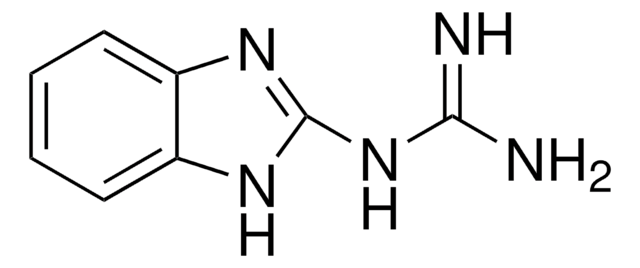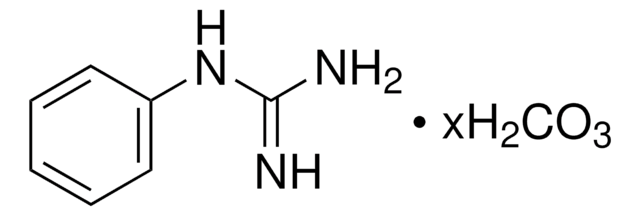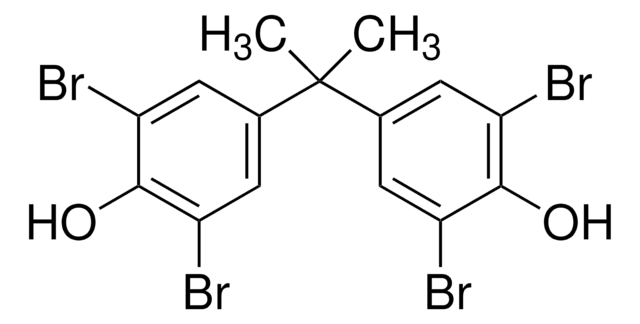164216
1-Phenylbiguanide
98%
Sinônimo(s):
1-(Diaminomethylidene)-2-phenylguanidine, 1-Carbamimidamido-N-phenylmethanimidamide, N-Phenyl-N′-guanylguanidine, N-Phenylbiguanide, N-Phenylimidodicarbonimidic diamide, N1-Phenylbiguanide, PBG
About This Item
Produtos recomendados
Nível de qualidade
Ensaio
98%
Formulário
solid
pf
135-142 °C (lit.)
solubilidade
alcohol: freely soluble
water: freely soluble
grupo funcional
amine
cadeia de caracteres SMILES
NC(=N)\N=C(/N)Nc1ccccc1
InChI
1S/C8H11N5/c9-7(10)13-8(11)12-6-4-2-1-3-5-6/h1-5H,(H6,9,10,11,12,13)
chave InChI
CUQCMXFWIMOWRP-UHFFFAOYSA-N
Informações sobre genes
mouse ... Htr3a(15561)
Categorias relacionadas
Descrição geral
Aplicação
- 4-chloro-2,5-dihydro-2,5-dioxonaphtho[1,2-d]imidazole-3-carboxylic acid phenyl amide
- 6-chloro-8-phenylamino-9H-7,9,11-triaza-cyclohepta[a]naphthalene-5,10-dione
- 4-dimethylamino-5,10-dioxo-2-phenylimino-5,10-dihydro-2H-benzo[g]quinazoline-1-carboxylic acid amide
Código de classe de armazenamento
11 - Combustible Solids
Classe de risco de água (WGK)
WGK 3
Ponto de fulgor (°F)
Not applicable
Ponto de fulgor (°C)
Not applicable
Equipamento de proteção individual
Eyeshields, Gloves, type N95 (US)
Escolha uma das versões mais recentes:
Já possui este produto?
Encontre a documentação dos produtos que você adquiriu recentemente na biblioteca de documentos.
Nossa equipe de cientistas tem experiência em todas as áreas de pesquisa, incluindo Life Sciences, ciência de materiais, síntese química, cromatografia, química analítica e muitas outras.
Entre em contato com a assistência técnica








